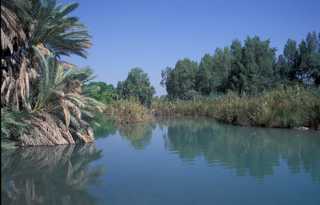Initiatives & Projects
 Models for Assessing and Forecasting the Impact of Environmental Key Pollutants on Marine and Freshwater Ecosystems and Biodiversity
Models for Assessing and Forecasting the Impact of Environmental Key Pollutants on Marine and Freshwater Ecosystems and Biodiversity
One of the driving forces for an insufficient ecological status and reduced biodiversity of freshwater and marine ecosystems is chemical stress due to environmental pollutants. The WFD classifies the quality status of aquatic ecosystems based on traditionalhydromorphological, physico-chemical, biological parameters and priority pollutant (PP) concentrations. This procedure allows a rough quality assessment. However, a reliable diagnosis, prediction and forecasting of toxic impacts on aquatic ecosystems and anefficient mitigation of toxic risks demand for an identification of the respective stressors and for reliable cause-effectrelationships between chemical pollution and biodiversity decline. To date severe gaps of knowledge impede the evaluation and mitigation of the causes for an insufficient ecological status in many aquatic ecosystems. MODELKEY is designed to bridge these knowledge gaps.
| Project number | 511237 | ||
|---|---|---|---|
| Subject(s) | HYDRAULICS - HYDROLOGY , MEASUREMENTS AND INSTRUMENTATION , NATURAL MEDIUM , PREVENTION AND NUISANCES POLLUTION , TOOL TERMS | ||
| Acronym | MODELKEY | ||
| Geographical coverage | United Kingdom, Germany, Belgium, Netherlands, Italy, France, Spain, Switzerland, Czech Republic, Finland, Slovakia, Russian Federation, Norway, Austria | ||
| Budget (in €) | 0 | ||
| Programme | FP6 - EC 6th Framework programme | ||
| Web site | http://www.modelkey.org/ | ||
| Objectives |
MODELKEY comprises a multidisciplinary approach aiming
at developing interlinked and verified predictive modelling tools as
well as state-of-the-art effect-assessment and analytical methods
generally applicable to European freshwater and marine ecosystems:
|
||
| Period | [01/02/2005 - 31/01/2010] | ||
Login to add a comment
 you are not logged in
you are not logged in





